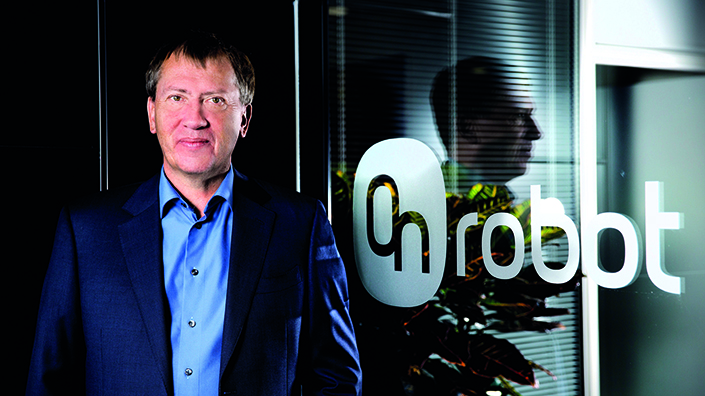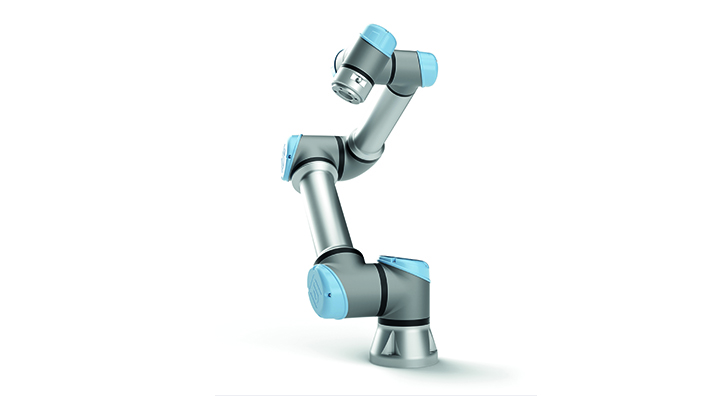The country has a substantial robotics base, including world-class manufacturers and academic programmes. Denmark hosts many full-scale test facilities and has a long tradition of developing solutions for complex processes in collaboration with end users.
It is home to the Maersk Mc-Kinney Moller Institute, a high-tech and internationally recognised research centre. Its aim is to develop new technologies for the good of society and it has spawned companies such as Universal Robots. The South Denmark University has also produced robotics experts, and the Odense Robotics Cluster is home to 120 companies specialising in robotics.
Danish technology pioneers include Per Brinch Hansen, known for concurrent programming theory; Bjarne Stroustrup, who invented the C++ programming language; Janus Friis, the co-inventor of Skype; and Jens and Lars Rasmussen, the co-founders of Google Maps.
According to Enrico Krog Iversen, CEO and founder of OnRobot, the success of Denmark’s robotics scene dates back to the 1980s and Odense, a city of 180,000 on Funen, the country’s garden island. Odense is full of manor houses and castles and is known for its cultural and historical hotspots. But that’s not all – in the technology and manufacturing industry, Odense is synonymous with robotics.
“In the 1980s, Maersk was the first in Denmark to use robots for welding, painting and processing, and donated €10m to the University of Southern Denmark to allow it to continue its research in robotics,” says Iversen. “Subsequently, the university attracted extremely competent and bright professors, which contributed to the progress in the research.”

“Importantly, as a nation, Denmark understood early on that investing in automation not only mitigates against the growing employment gap but significantly increases productivity and efficiency, which is necessary to remain competitive with global players,” says Per Kloster Poulsen, director at Universal Robots. This innovative approach to growing its economy resulted in the government putting more investment into the automation and eventually robotics industries, as well as academic and private bodies making it a focus for research. This is what has led to “Denmark being widely considered a leading robotics nation,” according to Poulsen.
Denmark is a small country with a population of less than six million, which has meant it has often ‘worried’ about its manufacturing industry. But it is very forward-thinking. According to its official website, Denmark values trust, openness and “an almost total lack of corruption”, which makes it a good place for business. Its “flexicurity” model means it is easy to hire from its small pool of workers but also let them go if business conditions change. The population is supported by an education system that is free for students.
The rise of automation has opened up more opportunities for Danish businesses: “Labour shortages, especially in manufacturing industry, are a constant concern,” says Poulsen. “However, despite having a much smaller working population than the UK, Denmark is the fourth most productive country in the world, while the UK is ranked 17th. This success is underpinned by the economy’s mass adoption of new, flexible automation technologies, such as cobots.”
But while the potential to automate in Denmark is lower than the global average, according to McKinsey, the potential for the country to export is constantly growing with the need for automation overseas. The commercial breakthrough for the Danish robotics industry arrived in 2005, in the form of Universal Robots. The success of the company attracted talent and investment to the country and, specifically, Odense.
The robotics capital
The Odense Robotics Cluster, located towards the south of the city, is home to 129 companies, with 80% of them picking the location as their headquarters.
The cluster has grown by 50% since 2015. There are also over 40 education programmes within the cluster and over 10 research and education institutions. It serves as an ecosystem as well as a place of work; 78% of the companies in the cluster partner with one another.
It’s home to companies such as Universal Robots and OnRobot, which was created from a merger of three companies: On Robot, a plug-and-play electric gripper manufacturer in Denmark, OptoForce, a force/torque sensor provider based in Hungary, and Perception Robotics, another bio-inspired robot gripper firm in California.
“Behind OnRobot lies the belief that the true value of robots depends on how and where we deploy them,” explains Iversen. “According to the International Federation of Robotics, the installed base for robots is set to increase 18 times in five years and, as it is unlikely that there will be 18 times more people to implement these, we need to make the technology much quicker and easier to deploy.”
But it was Universal Robots that was the catalyst to Odense’s boom to robotic prowess. Poulsen explains that Universal Robots is very much the ‘flagship’ robotics company in the region as well as internationally: “As the pioneer of collaborative robots (cobots) and the current market leader, we proved the profitability and popularity of robotics through the launch of our highly flexible and beneficial collaborative robots.”

This attracted and sparked the creation of other robotics and automation companies, he continues, with partners and competitors all over the world. However, the main ecosystem remains at Odense, so that its industry partners and customers can “easily optimise their automation needs”.
“Hundreds of industry-leading products are tested and approved to work with cobots from Universal Robots,” says Poulsen. “The wide range of businesses that have stemmed from our company is incredible – from grippers and accessories to vision systems and software – each system was specifically made to integrate seamlessly with one of our cobots.”
Almost half of the companies in the cluster today were founded after 2010, according to Odense Robotics, with start-ups making up a part of the Odense Robotics StartUp Hub. The growth seen in the cluster has also resulted in companies with more than 50 employees increase.
According to its Insight Report, “by the end of 2018, there were 3,600 full-time employees working in the cluster – 1,000 more employees than in 2016”. There are also more than 150 employees at educational institutions in the cluster.
“The city of Odense offers a unique and dense robotics ecosystem,” says Joost Nijhoff, director at Invest in Odense. “There’s nowhere else in the world where you would find so many robotics companies and roboticists working together in an area that you can cover by bicycle in 30 minutes.” However, when it comes to bringing in more talent, Odense robotics companies are finding it a challenge. The Insight Report found that as many as 78% of companies believed that recruiting qualified employees “was their greatest growth barrier”.
Robot heroes
Many companies are participating in the “We are robot heroes” campaign, which was launched in 2018. Its aim is to attract talent and create a bigger, stronger skilled pool. But to meet recruitment needs, talent needs to come in from abroad, with 39% of companies expecting to recruit new employees abroad to work in Odense.
With so much to achieve in one small place, the city council decided to establish a task force consisting of business leaders. These leaders were to put their brains together to create growth in Odense. This followed a recession and financial crisis, where traditional industrial companies outsourced to low-cost labour countries or closed down completely. And so Invest in Odense was conceived in 2014.
“After analysing the business sectors in the city and their growth potential, it was decided to focus on robotics companies,” says Nijhoff. “The talent, the innovation and the expertise were here and the collective attributes of so many robotics companies have added up to something much greater than the sum of its parts.

“We just tried to do our bit by connecting the right people to help these companies to drive this growth. The result has been over €750m invested in robotics companies since 2015.”
The International Federation of Robotics expects an average growth rate of 20-25% in the industry worldwide from 2018 to 2020. Denmark has embraced the future. In the Digital Economy and Society Index 2017, while 30% of the average populations in the EU believed that it will take more than 20 years before it will become normal for robots to do housework, 27% of the Danish population expected this to happen within five years.
“Recognising the relevance of automation and robotics, Denmark is continuing to invest in this area and is putting a large focus on teaching robotics and engineering skills in educational institutions to keep this legacy going,” explains Poulsen. “Basic programming skills are taught at primary school level and a larger number of robotics programmes are offered at universities.
“The Universal Robots Academy is an extension of this thinking. By creating simple online modules, we are aiming to lower the automation barrier by making core programming skills available to cobot users regardless of their robotics experience or backgrounds.”
Universal Robots’ success saw it purchased by US company Teradyne for $250m in 2015, which shows that there is hunger from abroad for Danish robotics companies. With a similar evolution “to that of Silicon Valley,” Odense definitely has a lot of potential, says Poulsen.
“Danish robotics manufacturers and distributors thrive thanks to the pool of talent this country has, with organisations like Maersk and the Danish Growth Fund eager to invest in local businesses,” concludes OnRobot’s Iversen. “Denmark is a great place for a robotics business.”
Content published by Professional Engineering does not necessarily represent the views of the Institution of Mechanical Engineers.